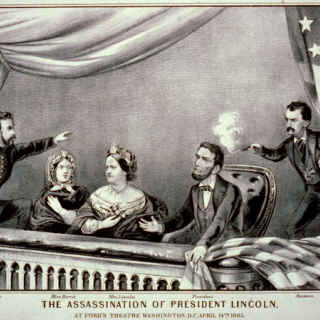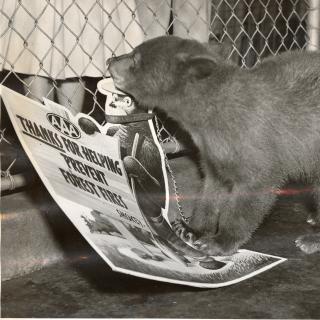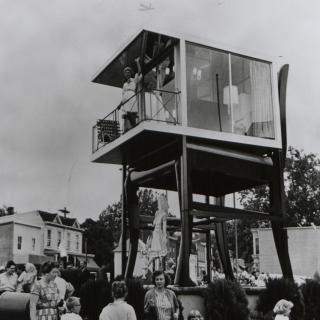Maryland was Almost "Almost Heaven" : The Story Behind "Take Me Home, Country Roads"
In the summer of 1970, Bill Danoff and Taffy Nivert were driving down Clopper Road to a family reunion in Gaithersburg, Maryland.[1] Montgomery County was a much more rural place in those days, and the scenery inspired Danoff to repetitively sing “country roads, country roads, country roads.” Under normal circumstances, this burst of creativity might have gone nowhere, but the couple happened to be a duo of professional musicians. So, they soon turned the phrase into a song, trying to capture the feel of that drive through MoCo.
There was slight problem, however. As Nivert later told Graffiti Magazine, “We were hard pressed to come up with a phrase that rhymed with ‘Maryland’ and so poetic license took its natural course.” [2]
The “natural course” led them to try out several other state names in the lyrics, including Danoff’s home state of Massachussetts. The duo, which went by the name of Fat City, eventually settled on West Virginia. As Danoff admitted later, it was an odd choice. Neither he or Nivert had ever set foot there. "West Virginia might as well have been in Europe, for all I know,” he said.[3]
Nevertheless, the Mountain State became the focus of the song, as Danoff and Nivert drew inspiration from a previous roadtrip down to Roanoke, Virginia. “We were driving down Highway 81 and there were the Blue Ridge Mountains and the Shenandoah River…I just assumed the other side of the river was West Virginia,” Danoff recalled.[4] (Geography buffs may note the error in this assumption. The parts of the Shenandoah River which are visible from I-81 between D.C. and Roanoke are completely within Virginia, not West Virginia. But, let’s not worry about the details. Fat City certainly didn’t).
The duo continued to experiment with lyrics, but the song remained unfinished for months, until one fateful night in late December.
Fat City was opening for up-and-coming folk singer John Denver at the now-closed Cellar Door at 34th and M streets NW. The musicians had all been friends since the 1960s, when Danoff was a student at Georgetown and ran the lights and sound at the Cellar Door.[5] Denver even recorded a song written by Fat City, “I Guess He’d Rather Be in Colorado,” after listening to them sing it in an M Street Bar one night.[6]
And so, after the show, Denver decided to head over to the couple’s basement apartment in Georgetown for a late-night jam session.[7] En route, he got into a car crash. Denver walked away from the accident with a broken thumb, a quirky footnote to an evening that would become much more memorable for other reasons, as he described to Rolling Stone,
I went to the hospital to have a splint put on and by then I was wired, you know, after a car wreck. So we went over to their house and in the early hours of the morning they showed me this chorus and part of the verse to a song they were writing called ‘Country Roads’ and I flipped over that song.”[8]
According to Danoff, Denver’s exact words at the time were “'Gol-ly! That's a hit!’”
The couple had intended the song for someone like Johnny Cash,[9] but Denver couldn’t sleep, and they all stayed up together until well into the morning to finish the song.
Nivert, who was scribing the lyrics, wanted to include the West Virginia state flower, rhododendron, somewhere in the song[10]—an idea which Danoff and Denver rejected from the now widely-known verses.
Denver cut another verse that night, one written previously by Fat City, because he thought no one would play it on the radio:
In the foothills, hiding from the clouds
Pink and Purple, West Virginia Farmhouse
Naked ladies, men who look like Christ
And a dog named Pancho, nibbling on the rice”[11]
Hear Bill Danoff explain the story behind these redacted lyrics at around 2:30 in this video, a 2010 performance of the song at Georgetown University, his alma mater:
(Danoff’s reference to “the basketball team” at 00:18 alludes to the 2010 Big East Men’s Basketball tournament, where West Virginia beat Georgetown and played “Take Me Home, Country Roads,” to celebrate).[12]
As to Denver’s contribution, Danoff later had a hard time remembering exactly which lines the famous singer wrote, but told West Virginia University Sports that the phrase “all my memories” almost certainly came from Denver.[13]
In any case, the song was finished by around 6 a.m., and ready to be played that same day at the Cellar Door.
That night, thumb in a cast, Denver performed the song live for the first time with Fat City. The applause was long, and all three felt that they had a hit with “Country Roads.”[14]
The following night, for New Year’s Eve (which also happened to be John Denver’s birthday), the Cellar Door show was listed in the Evening Star as one of the top places in D.C. to ring in the new year. For around $12.50 a person, you could see:
a three-act show which includes the soothing folk tunes of John Denver (broken thumb and all); Fat City and local ‘folkie’ Andy Wallace. Included is a split of champagne, hats, noisemakers, etc.”[15]
Nothing about Denver’s new song was mentioned, but continued ovations that night and for the rest of his gig in the District reassured him that this was a song that he wanted on his new album.
Denver’s career had been on the ascendant prior to this songwriting collaboration with Fat City, but he wasn’t exactly a superstar yet. Earlier that December, Evening Star critic Kathy Orloff (who seemed overall to be a Denver fan) commented: “For someone with such a rich and expressive voice—and Denver’s greatest accomplishment is that he can interpret a song to make it totally real—his albums have been a disappointment. He credits himself with the bad mixing on the first album and feels a steady improvement with the next two.”[16]
Denver’s next album was Poems, Prayers & Promises, released in April 1971. “Take Me Home, Country Roads,” recorded with Fat City backing him up, was by far a standout single from it.
Danoff, for one, was surprised. He revealed to NPR years later that when they recorded “Country Roads,” he thought “There's way too much echo on that…I loved the song, but I thought we'd blown the record. And millions of other people didn't agree."[17]
By that summer, the song was Denver’s first to hit the Billboard Hot 100 charts and climbed all the way to the Number 2 spot in August of 1971.[18]
Denver reflected on how “Country Roads” propelled him to stardom in an interview with Rolling Stone:
It really changed the whole situation. I had a record on the charts and all of a sudden it’s not John Denver, the writer of ‘Leaving, on a Jet Plane,’ but it’s John Denver who sings the song that you hear on the radio. So a whole thing changed.”[19]
Things changed for Fat City, too. With the royalties from the song, they were able to buy a house and a Mercedes, in addition to paying off some outstanding bills.[20]Taffy Nivert told Graffiti Magazine years later:
We paid off a $1,500 grocery bill we had run up at Sol and Helen Butt’s mom and pop grocery store in our neighborhood... Sol dropped the check to see if it would bounce. We moved out of the last remaining slum in Georgetown, D.C. We toured small clubs all over the country as John’s opening act. We would perform, then come out at the end of John’s set and sing ‘CR’ with him. It was a great couple of years in all our lives.”[21]
Here are Denver, Nivert and Danoff performing “Country Roads” for the BBC after the song became a hit:
A few years later, Nivert and Danoff went on to form half of the Starland Vocal Band (their 1976 megahit “Afternoon Delight” was also inspired by a District locale).
Denver, meanwhile, went on to become, well… John Denver. A true crossover artist, he had huge success on the Pop, Adult Contemporary, and Country charts with songs like “Rocky Mountain High,” “Annie’s Song,” and others. Though many in Nashville considered him more folk singer than classic country, he was named the Country Music Association’s Entertainer of the Year in 1975, in a ceremony that became a thing of legend. And, in 2017, Rolling Stone named Denver one of the 100 greatest Country artists of all time.
But “Country Roads” has taken on a life of its own; it became one of West Virginia’s official state songs in 2014 and has been covered by musicians all over the world since it came out.[22]
Even though the song’s creators had never been to West Virginia in 1970 (and indeed, some native West Virginians take offense to its references to geographic features found only in the extremities of the state), Danoff believes that the massive and continued appeal of “Take Me Home, Country Roads” is that universal feeling of travelling home[23]—inspired by a D.C. band’s trip down Clopper Road.
Footnotes
- ^ Danoff, Bill. "A Journey Down A Country Road; John Denver's Songs Traveled with a Smile: FINAL Edition]." The Washington Post, Oct 14, 1997. https://library.access.arlingtonva.us/login?url=https://search-proquest….
- ^ Fleishman, Tamar Alexia. “’Country Roads’ Kept Taffy Nivert Danoff Home.” Graffiti Magazine. June 3 2008. http://www.grafwv.com/page/content.detail/id/500315/-Country-Roads--Kep…
- ^ Gitner, Jess. “At 40, ‘Take Me Home, Country Roads’ Still Belongs.” April 6, 2011. Heard on Morning Edition, NPR. https://www.npr.org/2011/04/06/135150085/at-40-take-me-home-country-roa….
- ^ “Take Me Home, Country Roads.” January 29, 2014. WVU Sports. https://wvusports.com/news/2014/1/29/24994_131465976649784385.aspx
- ^ Danoff, Bill. "A Journey Down A Country Road; John Denver's Songs Traveled with a Smile: FINAL Edition]." The Washington Post, Oct 14, 1997.
- ^ Zito, Tom. "Fat City Plays the Cellar Door." The Washington Post, Times Herald (1959-1973), Apr 12, 1972. https://library.access.arlingtonva.us/login?url=https://search-proquest-com.library.access.arlingtonva.us/docview/148327444?accountid=57895
- ^ Bill’s Music Heritage: In Bill’s Own Words – the Whole Story.” Bill Danoff. Updated September 29, 2016. http://www.billdanoff.com/musicheritage.htm
- ^ Flippo, Chet. “John Denver: His Rocky Mountain Highness.” Rolling Stone. May 8, 1975. https://www.rollingstone.com/music/music-news/john-denver-his-rocky-mountain-highness-168837/
- ^ Grove, Lloyd. "The Reliable Source." The Washington Post, Sep 21, 1999. https://library.access.arlingtonva.us/login?url=https://search-proquest….
- ^ Fleishman, Tamar Alexia. “’Country Roads’ Kept Taffy Nivert Danoff Home.” Graffiti Magazine. June 3 2008.
- ^ Ibid.
- ^ "Take Me Home, Country Roads.” Jamuary 29, 2014. WVU Sports.
- ^ Ibid.
- ^ Fleishman, Tamar Alexia. “’Country Roads’ Kept Taffy Nivert Danoff Home.” Graffiti Magazine. June 3 2008.
- ^ Seagraves, John. “After Dark: Where to ‘Spend’ New Year’s Eve.”Evening Star, December 31, 1970: 9, accessed July 03, 2019, https://infoweb.newsbank.com/resources/doc/nb/image/v2:13D5DA85AE05A305…@?p=WORLDNEWS.
- ^ Orloff, Kathy. “John Denver’s Story: Riding a ‘Jet Plane to Success.”Evening Star, December 01, 1970: 17, accessed July 03, 2019, https://infoweb.newsbank.com/resources/doc/nb/image/v2:13D5DA85AE05A305…@?p=WORLDNEWS
- ^ Gitner, Jess. “At 40, ‘Take Me Home, Country Roads’ Still Belongs.” April 6, 2011. Heard on Morning Edition, NPR.
- ^ Danoff, Bill. "A Journey Down A Country Road; John Denver's Songs Traveled with a Smile: FINAL Edition]." The Washington Post, Oct 14, 1997.
- ^ Flippo, Chet. “John Denver: His Rocky Mountain Highness.” Rolling Stone. May 8, 1975.
- ^ Alex Ward. "Success Began with 'Country Roads': Alex Ward Frequently Writes about Popular Music for the Style Section of the Washington Post." The Washington Post (1974-Current File), Aug 07, 1977. https://library.access.arlingtonva.us/login?url=https://search-proquest….
- ^ Fleishman, Tamar Alexia. “’Country Roads’ Kept Taffy Nivert Danoff Home.” Graffiti Magazine. June 3 2008.
- ^ [i]Sibray, David, Editor/Publisher. “’Take Me Home, Country Roads’ reaching new audiences.” West Virginia Explorer. August 23, 2018. https://wvexplorer.com/2018/08/23/country-roads-reaching-new-audiences/
- ^ Take Me Home, Country Roads.” Jamuary 29, 2014. WVU Sports.


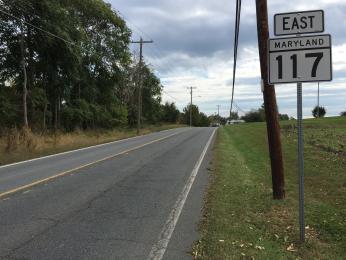
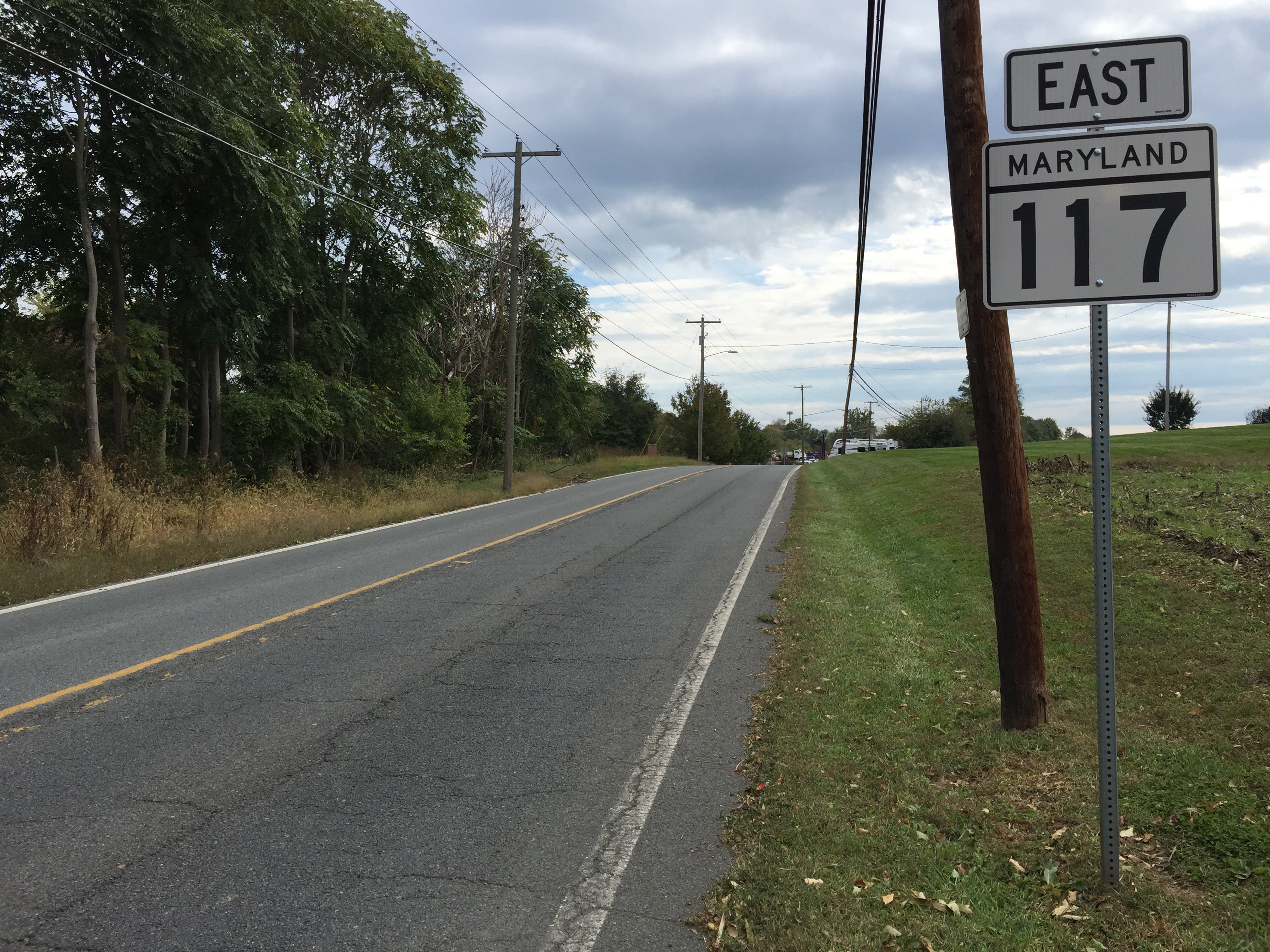
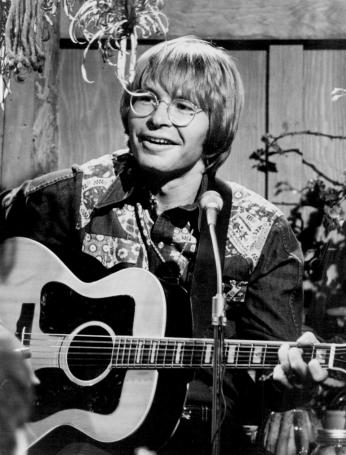
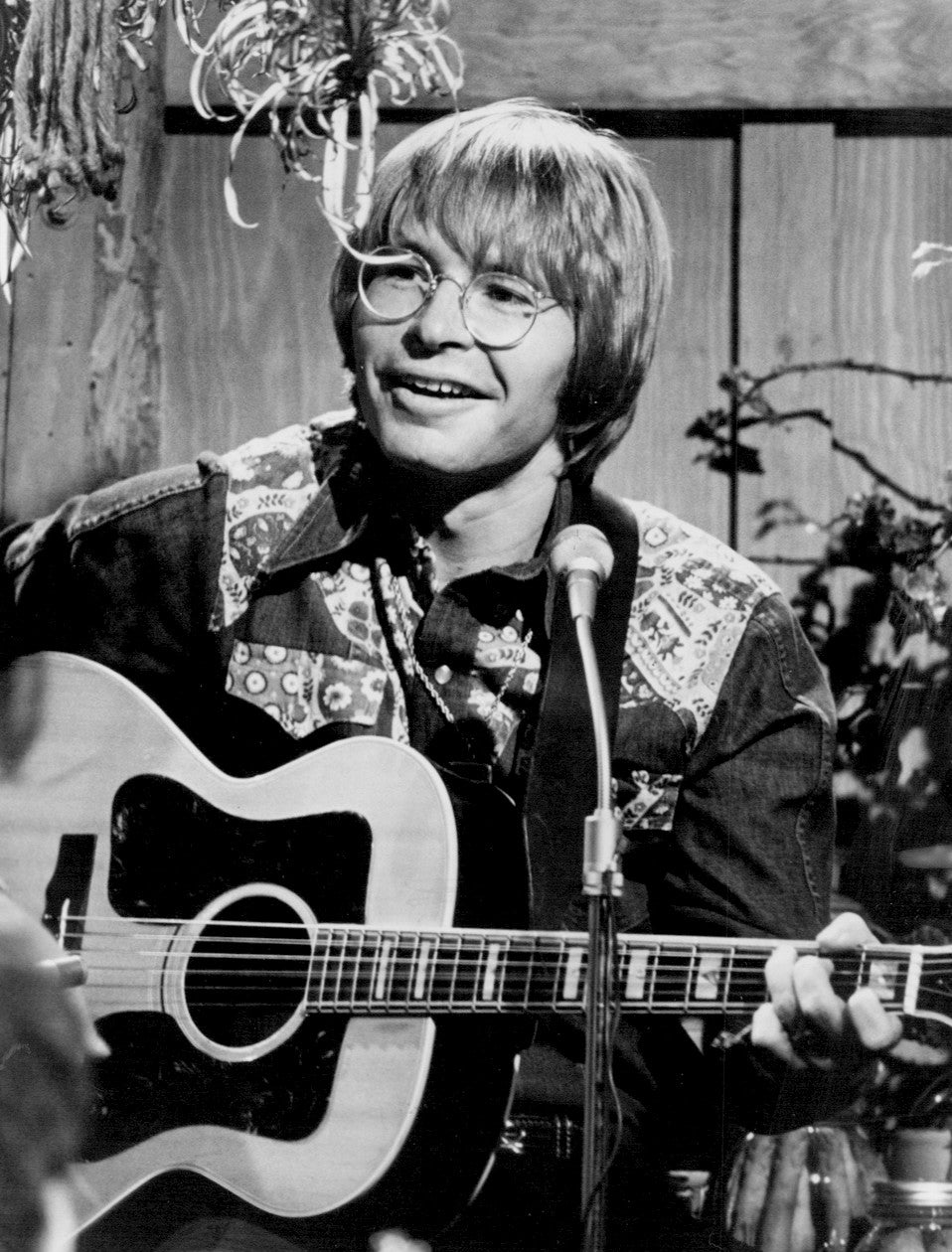
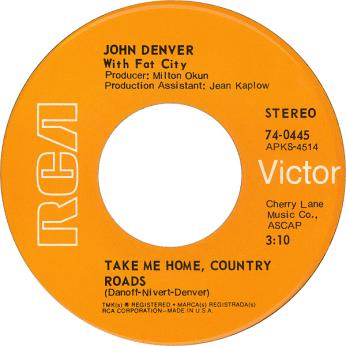
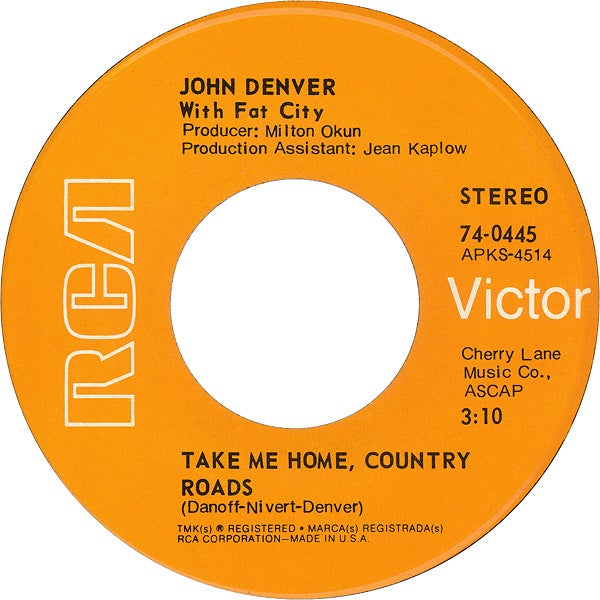

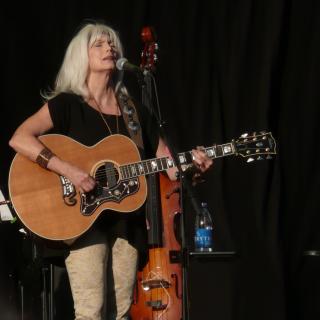

![Sketch of the mythical fuan by Pearson Scott Foresman. [Source: Wikipedia]](/sites/default/files/styles/crop_320x320/public/2023-10/Goatman_Wikipedia_Faun_2_%28PSF%29.png?h=64a074ff&itok=C9Qh-PE1)







